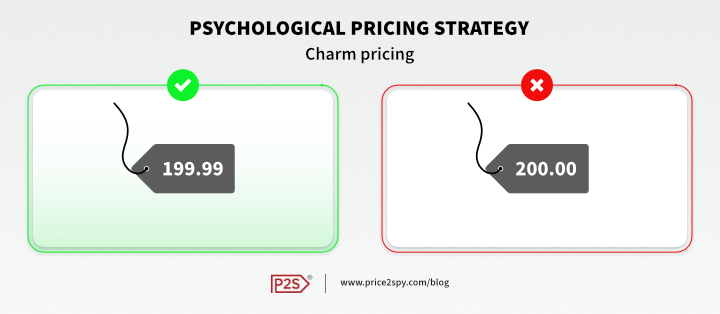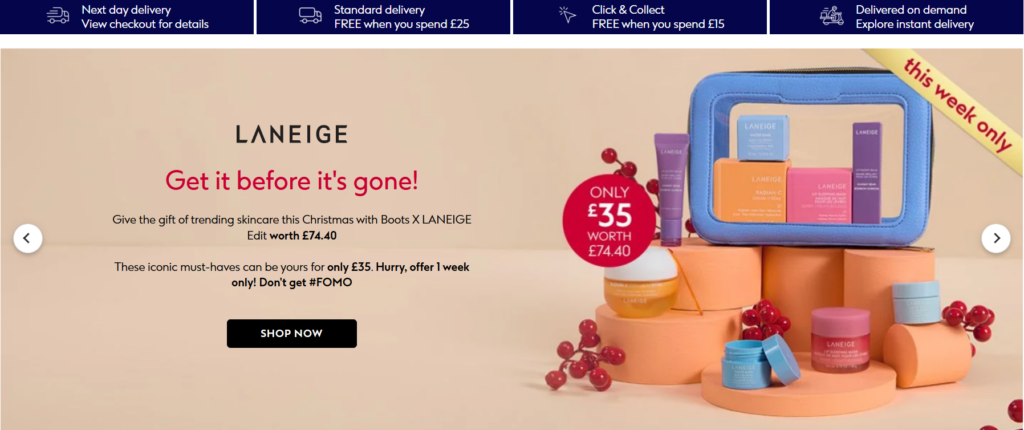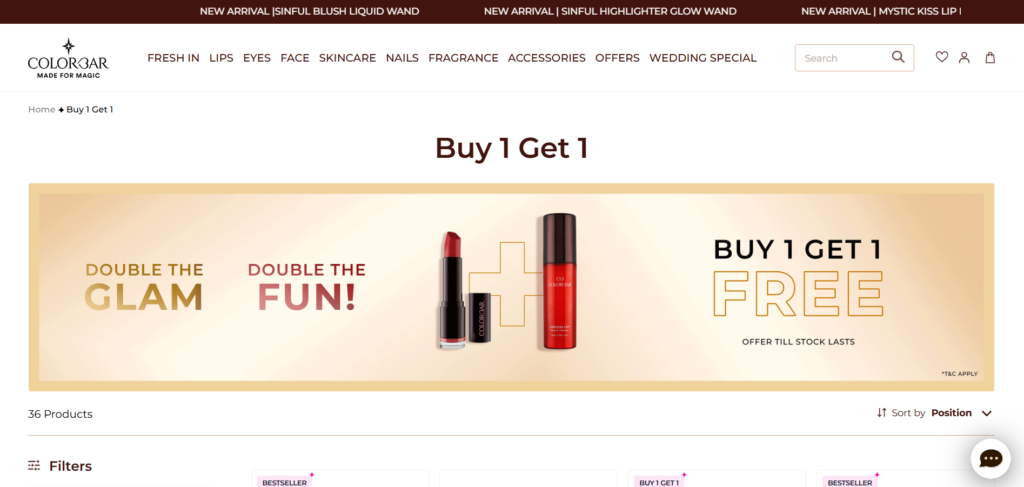
6 Psychological Pricing Strategies With Examples
Using psychology in pricing is not a new strategy. Retailers have always been using different tricks to ensure their products sell well. Over time, some Psychological Pricing Strategies showed better results than others, and what was a good profit-making marketing and pricing strategy in the past, may not be so useful nowadays.
It’s not always about being the cheapest – it’s rather how appealing your price is! So, don’t always rely just on competitive pricing, get creative and try to use imagination to provide psychological price points people just can’t resist!
Let’s try to explain what is psychological pricing first. After that, we will list the top strategies with some psychological pricing examples.
Psychological Pricing Definition
Psychological pricing is best understood as a set of diverse pricing tactics that tap into customers’ emotional or cognitive triggers and biases.
It is crucial that pricing changes made according to a psychological pricing strategy are tracked and their results measured. Behavioral customer data and insights are crucial for making the right decisions here.
In other words, every tactic designed to “hit the sweet spot in customers’ minds” or to make prices more appealing can be considered psychological pricing. The idea behind this is to enhance the perceived value of a product while making the price appear more appealing or reasonable.
Psychological Pricing Strategies
Psychological pricing strategy usually consists of numerous psychological pricing tactics that are implemented depending on the business needs and market conditions.
All of these psychological pricing strategies and tactics should work towards one same business goal.
Depending on the strategy, these goals can be short or long term. Either way, boosting sales volume while keeping margins as intact as possible is the most common goal with any psychological pricing strategy.
Even though the actual number of possible psychological tactics is only limited by your creativity and willingness to experiment with your prices and perform price testing, we picked some of the most common ones that showed the best results in different industries.
1. Charm pricing
This is a psychological pricing strategy, or to be more specific – a tactic – where the pricing point is set in a way for the number to look better for a customer.
Charm pricing is a way of pricing where the prices are slightly lower just to avoid an even number.
There are two main types of charm pricing. One is odd pricing and the other is even pricing. As their names suggest, odd pricing indicates prices that end in an odd number, such as .99. Actually, this specific tactic where prices end in a number nine is called nine-ending pricing. Even pricing, on the other hand, usually refers to rounded prices that end in .00 (or in rarer cases another even number).

Nine-ending pricing is the most common tactic, as you already noticed. It is so widespread that it’s almost impossible to go shopping and not see it everywhere.
Why is this the case?
The psychology behind this way of setting prices is relatively simple. People tend to read from left to right. So, when you put a price of 19.99 it appears lower than 20 because customers will most likely read only the digits on the left side.
People usually self-report that they have developed mental safeguards to this type of psychological tactic. The reality, however, is somewhat different.
People (un)consciously do correlate prices ending in .99 with better value for their money. There is a limit to this, though. For example, in real estate you will rarely see this approach and prices will generally be rounded. But, let’s not stray away from our topic, which is primarily eCommerce.
In online retail too, there may be some categories where there may be better alternatives to nine-ending pricing. These are mostly categories which target the higher-income customers. These include luxury goods, expensive home appliances, and certain products with customization options. This is not a hard and fast rule, though, so don’t be surprised when you encounter exceptions
The bottom line is that when looking at sales long term, especially in FMCG, ending prices in .99 (or .95) will likely positively impact your sales numbers (if compared to the same period of sales with, for example, rounded prices).
2. Prestige pricing
Prestige pricing is the psychological pricing tactic of setting the price in a manner that makes the customers feel like they are buying a premium product and getting more features for the given price.
It is sometimes referred to as premium pricing, as well. This distinction works sometimes. However, there is an important difference to be made between these two tactics. We will get to it slightly later on in the article.
An important psychological motivation behind prestige pricing is the fact that some customers appreciate when the price point of a product distinguishes their socioeconomic status.
In other words, the psychology behind this trick is to make the customer feel like they are not “cheap” or not “saving where you shouldn’t save”.

In the case of prestige pricing, the prices are always set higher than for the “regular” product. Usually the prices for these products are rounded (meaning they end in .00). In a certain way, it is similar to rounded pricing.
Customers don’t want to buy a diamond ring and feel cheap about it.
Now, let’s take a quick look at the distinction between premium and prestige pricing.
Prestige pricing refers to setting a high price to signal a product’s superior quality, exclusivity, and luxuriousness. It’s less about the intrinsic value of the product and more about its perceived value and, as we have said, the socioeconomic status it signifies. Premium pricing can in numerous cases refer to charging a premium for the product’s higher quality, richer set of features, or its superior performance. In this case, premium pricing reflects the product’s measurable better quality and/or technology.
3. Creating a sense of urgency
“Hurry up! 3 hours before this special offer expires! “
Creating a sense of urgency as a part of your pricing strategy means tapping into your customers’ fear of missing out (FOMO).
This psychological tactic is related to pricing, but can also go beyond it. Let’s take a close look.
When a customer faces an urgent situation, they have to make a quicker decision. Quicker decisions mean less time to think (and compare prices) leading potentially to impulse purchases.
On top of this, people generally like to capitalize on opportunities to save money – to get “the best bang for their buck”.
This is why, when presented with a seemingly incredible deal that lasts for a short period of time, customers are more likely to make an impulse purchase.

When implementing this psychological pricing tactic, there’s one crucial thing to keep in mind: potential customer backlash, which can often occur if your customers experience remorse or regret after purchases. Creating a sense of urgency by using FOMO tactics can (and rightfully so) be considered manipulative in nature, cause loss of customer trust, and fatigue customers due to overuse.
What you want to do is use this tactic sparingly and when it makes sense. Ensure that the limited-time offers are legitimate and be transparent about it. In the long-run this will increase the trust your customers have in your brand.
4. Line (comparative) pricing
Comparative (line) pricing is a psychological tactic that means placing expensive products next to less expensive ones. But what’s the point?
Well, it’s not any two products. The products should be from the same category and usually at a comparable, yet distinct, level of quality.
Also, prices should, to a certain extent, reflect these differences. Depending on the retailer’s goals, these prices may closely relate the intrinsic value of a product, but may also be set in such a way that they nudge customers toward purchasing one specific product in the line.
Let’s say there are three comparable products. As an example, let’s take a product that’s widely familiar – water. As a product, most of the bottled water is basically identical in terms of quality. However, the packaging and marketing efforts around that water may change.
A retailer might do the following: place three water bottles next to each other. One is priced $1.00, the other $3.00, and the last one $4.00. A classic economical theory, which assumes that customers are rational and that they look to purchase the same product at the lowest price would say that customers would dominantly purchase the $1.00 bottled water.
Strangely enough, this often may not be the case.
People may actually go for the $3.00 option the most because:
- It seems like a “sweet spot” in terms of the price/quality ratio.
- The decoy effect of the $1.00 water may make it seem like too low of a quality choice, further nudging customers toward the $3.00 option.
- The $4.00 option may seem too expensive for what it offers.
In summary, the $3.00 bottle attracts the most customers. This is because it’s framed as a reasonable middle ground. It stands between the inexpensive, low-value $1.00 bottle and the overpriced, luxury $4.00 bottle. The perceived value of the $3.00 bottle, driven by comparative pricing, makes it the most attractive choice.
5. Bundle pricing / BOGOF
“Buy one, get one Free” (BOGOF) is an example of a bundle pricing strategy, with a psychological twist. Apart from this one, which is the most famous, there are many different variations. For example, some companies started using promotions like “buy one get 2 free” or offering a special type of credit for the next purchase.
It is not a surprise that this strategy is very beneficial for retailers since it relies on the consumers’ need to get more for the same price. Instead of offering something abstract like a discount, where people have to do the calculations on their own, you are offering something material and concrete.
For example, people will find it more tempting to buy one product if they get the other for free than to get 50% off the price for both products. This is simply because they will feel like they have something realistic instead of abstract percentages.
6. BONUS TIPS – Price appearance
Humans are visual beings and this fact applies to prices. The same price for the same product can bring different selling results – it all depends on customers’ price perception.
Here are a few points you can improve, to make your prices better:
- Remove the $ sign from the price – this will make the price look shorter, and people will think less about the money they are spending. This may not be as applicable in eCommerce as in, let’s say restaurants, but you may reconsider how you are displaying the currency of your prices.
- Remove additional digits and marks – when displaying a price, you should pay attention to make it look lower, by making it shorter. You can simply remove the ‘.00’ from the end of the price or if your price is ‘1,299.00’ you can simply use ‘1,299’.
- Price design – make your price stand out. For example, if you are offering a discount, you can put the color of the old price in red and the new discounted one in green. Or if the price is in an odd number, you can write the digits on the right smaller than those on the left. You may also consider crossing out the old price, and making the new, lower price larger.
Experiment with the look of your prices and see what brings the best results. The only limitation is your creativity. However, be sure to constantly monitor the data and see how your customers react to these changes.
Conclusion – Does psychological pricing work?
The fundamental prerequisite of a successful psychological pricing strategy is understanding the customers’ motivations.
If you understand the motivations behind customers’ desire to browse, purchase, and perhaps even re-order, then the answer is yes, psychological pricing strategy and tactics do work.
On the other hand, if prices are set based on assumptions, at best you are relying on luck, and at worst you are either hurting your sales or leaving money on the table.
Either way, setting prices is not an easy thing to do. This is why smart retailers automate their pricing strategy implementation.
Planning your price strategy and repricing can be very time-consuming. This is why we recommend using software such as Price2Spy to help you out. Take your free Price2Spy trial and see what benefits it can bring to your business.







